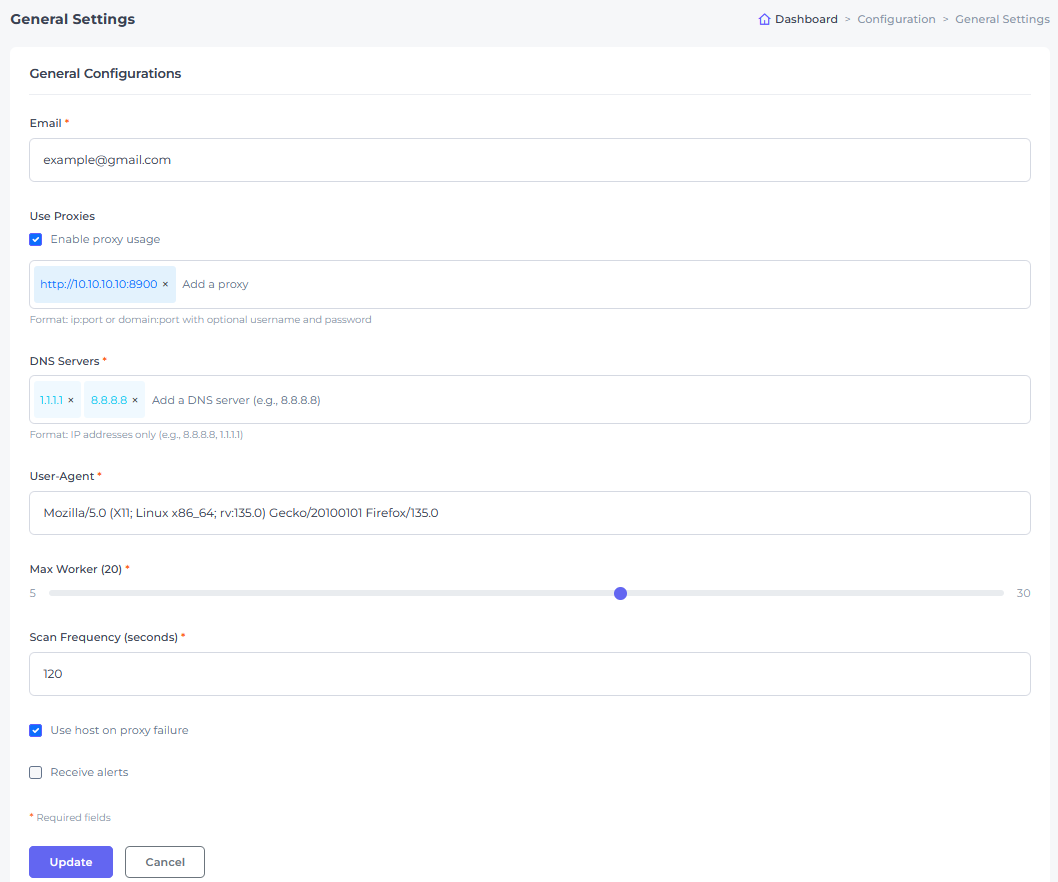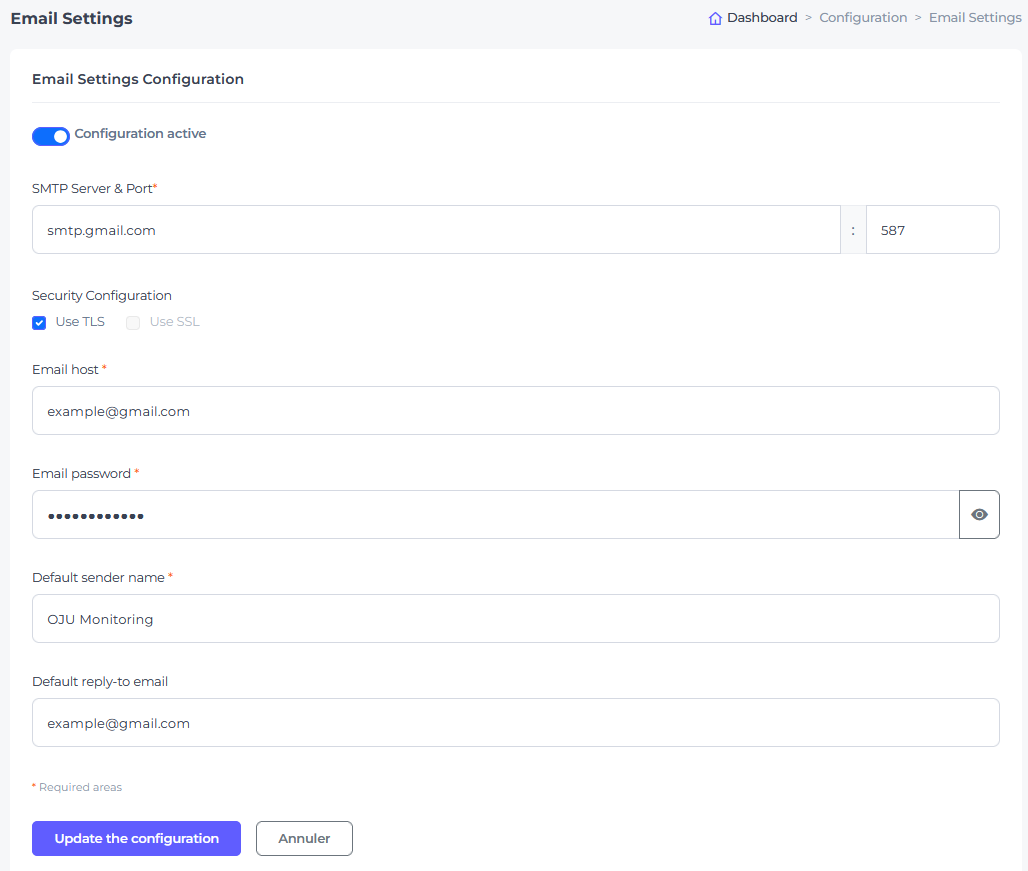System Administration
Overview
System Administration provides centralized management of Oju core settings and email configurations. This section covers system-wide parameters that affect monitoring behavior, network connectivity, and notification capabilities.
System Configuration
General Settings
Core System Parameters:
-
Email - Primary system email address for notifications
-
Proxies - List of proxy servers for HTTP requests (Route monitoring traffic through specified proxies, e.g., http://proxy1:8080, http://proxy2:8080)
-
Proxy usage - Controls whether monitoring uses configured proxy servers. Toggle action automatically tests proxy connectivity when enabled
-
DNS servers - List of DNS servers for domain resolution.Custom DNS servers for domain lookups and validation
-
User-Agent - HTTP User-Agent string for web requests. Identifies Oju in HTTP requests to monitored platforms
-
Max worker - Maximum number of concurrent scanning workers. Controls system resource usage and scanning parallelism
-
Scan frequency - Interval between monitoring scans. Controls how often platforms are monitored
-
Use host on proxy failure - Determines fallback behavior when proxy connections fail. When enabled, falls back to direct connection if proxy unavailable
-
Receive alerts - Global alert reception toggle. Enable/disable system-wide alert generation
Configuration Management
Updating Settings:
-
Navigate to Config > General Settings
-
Modify desired parameters
-
System validates input format and values
-
Changes are applied immediately with system logging
-
Cache invalidation occurs for DNS settings

|
All configuration changes are logged in the system audit trail with user identification and timestamp. |
Email Configuration
SMTP Settings
Server Configuration:
-
SMTP server - SMTP server hostname or IP address
-
SMTP port: - SMTP server port number
-
Use TLS: - Enable STARTTLS encryption for SMTP connection
-
Use SSL: - Enable SSL/TLS encryption from connection start
-
Email host: - Username for SMTP authentication
-
Email password: - Password for SMTP authentication
-
Default sender name: - Display name for outgoing emails
-
Default reply-to email: - Display reply-to email
-
Configuration active: - Master switch for email functionality. This enable/disable all email notifications

|
TLS and SSL are mutually exclusive. Configure only one encryption method based on your SMTP server requirements. |
Email Configuration Management
Connection Testing:
-
Automatic SMTP connection test when saving configuration
-
Validates server connectivity, authentication, and security settings
-
Configuration is rejected if connection test fails
-
Test includes DNS resolution, port connectivity, and authentication
Toggle Status:
-
Email system can be enabled/disabled without changing configuration
-
Enabling inactive configuration triggers automatic connection test
-
System prevents activation if connection test fails
-
Status changes are logged for audit purposes
Rate Limiting:
-
Email configuration updates limited to 2 attempts per 60 seconds
-
Prevents excessive server testing and potential account lockouts
-
Limit applies to configuration updates, not toggle operations
-
Rate limit reset after timeout period
|
Email configuration changes trigger immediate connection testing. Ensure SMTP credentials and server settings are correct to avoid account lockouts. |
Configuration Process
Setting Up Email:
-
Navigate to Config > Email Settings
-
Enter SMTP server details (hostname, port)
-
Select appropriate encryption method (TLS or SSL)
-
Provide authentication credentials
-
Set sender name for outgoing emails
-
Save configuration
-
Activate email system using toggle if test successful
System Administration provides essential control over Oju monitoring behavior and notification capabilities, ensuring optimal performance and reliable alert delivery.